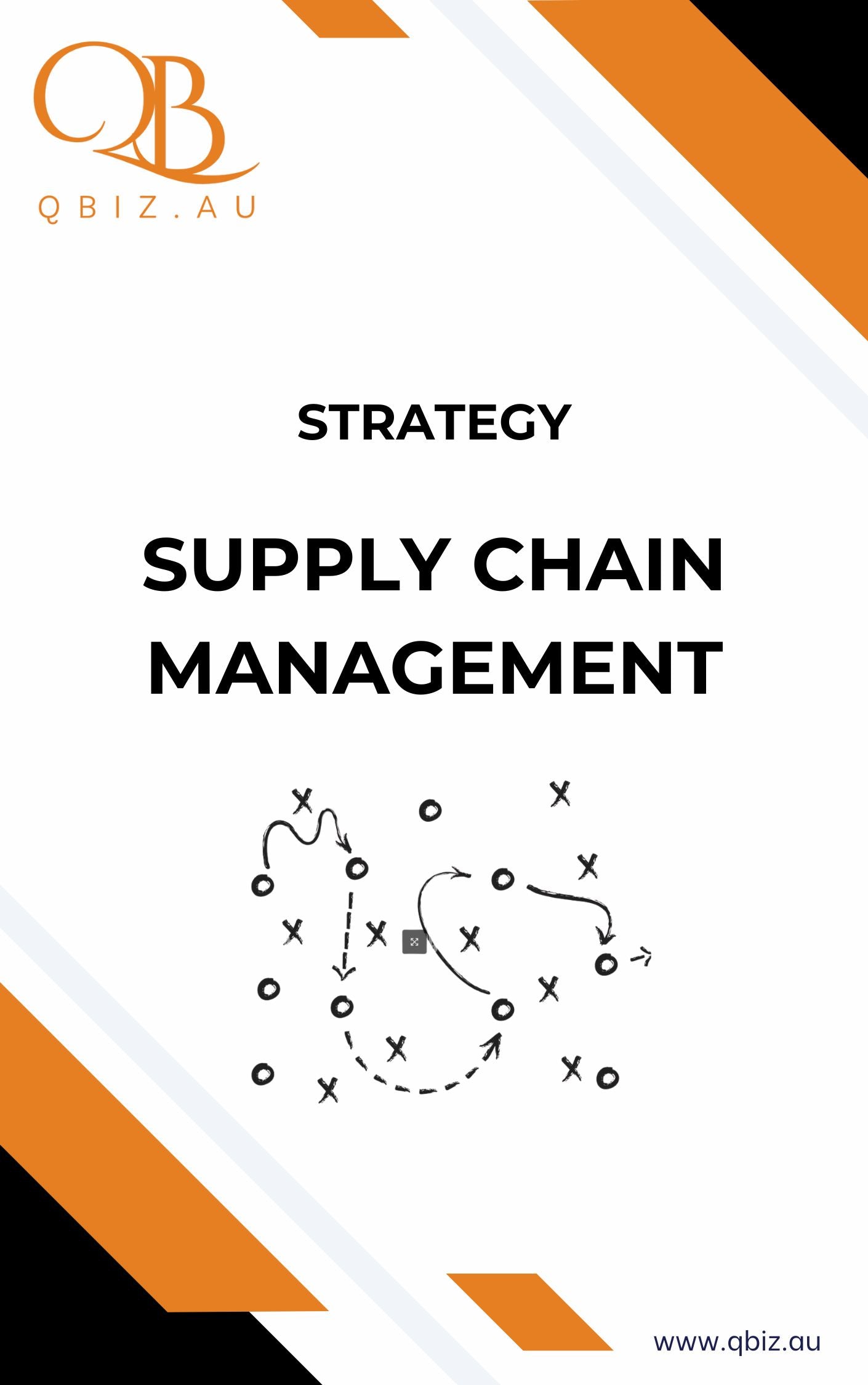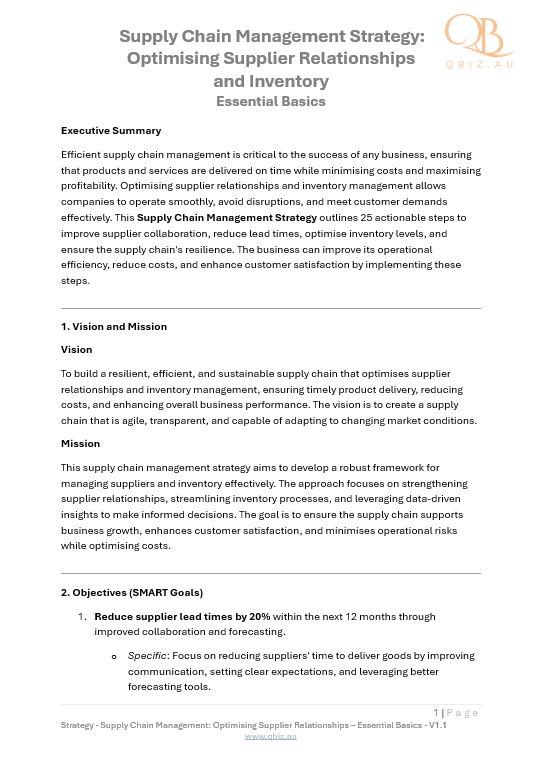Qbiz.AU
Supply Chain Management Strategy: Optimising Supplier Relationships and Inventory
Supply Chain Management Strategy: Optimising Supplier Relationships and Inventory
Couldn't load pickup availability
Product Description: The "Supply Chain Management Strategy: Optimising Supplier Relationships and Inventory" is a comprehensive guide designed to help businesses streamline their supply chain operations, build stronger supplier partnerships, and optimize inventory management. This strategy outlines 25 actionable steps to reduce costs, improve efficiency, and enhance resilience. Ideal for business owners, operations managers, and procurement teams, this guide ensures businesses can create a more agile, transparent, and sustainable supply chain that meets customer demand and supports long-term growth.
Word count: 3,088
PDF pages: 17
Audio minutes: 28.30
Key Features & Benefits:
- Enhanced Supplier Collaboration: This strategy focuses on building strategic partnerships with suppliers to improve lead times, reduce costs, and foster innovation.
- Optimized Inventory Management: Provides steps to minimize excess inventory, reduce stockouts, and improve cash flow through better demand forecasting.
- Resilient Supply Chain: Improves supply chain transparency and develops contingency plans to ensure businesses can quickly adapt to disruptions.
What's Inside:
This downloadable PDF outlines a comprehensive 25-step supply chain management strategy, including:
- Conducting a supplier analysis to identify key suppliers and establish long-term strategic partnerships for better collaboration.
- Implementing advanced demand forecasting tools to improve inventory planning and reduce stockouts.
- Adopting lean inventory management practices such as just-in-time (JIT) to minimize excess stock and reduce holding costs.
- Enhancing supply chain transparency with real-time inventory, shipments, and supplier performance tracking.
- Developing contingency plans to mitigate supply chain risks, including disruptions from supplier failures, natural disasters, and geopolitical events.
- Leveraging technology such as RFID and barcode tracking to improve inventory accuracy and streamline order processing.
FAQ Section:
-
Q: How does this strategy help reduce operational costs?
A: The strategy ensures lower costs associated with storage, transportation, and stockouts by optimizing inventory levels, improving supplier collaboration, and reducing lead times. -
Q: Is this strategy adaptable to different industries?
A: Yes, the strategy is flexible and can be applied to businesses in various industries, from manufacturing to retail, ensuring efficient supply chain operations. -
Q: How does this strategy improve supply chain resilience?
A: The strategy includes risk assessments, contingency planning, and enhanced visibility, ensuring businesses can respond quickly to disruptions and maintain operations.
Download the "Supply Chain Management Strategy" today to implement a proven system that optimizes supplier relationships, improves inventory management, and ensures a resilient and cost-effective supply chain.
Share with a colleague




